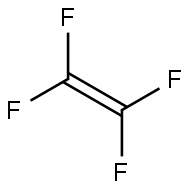Physical properties
Polytetrafluoroethylene is a highly crystalline robust unique plastic with a high melting point.It maintains high strength, toughness and self-lubrication at low temperatures down to 5K (−268.15°C; −450.67°F), and good flexibility at temperatures above 194K (−79°C; −110°F).
Characteristics
Polytetrafluoroethylene is a highly crystalline robust unique plastic with a high melting point. The material has a propensity to exhibit considerable elastic deformation under load. Consequently, in applications that require a frictionless surface and resistance to load, such as bearing surfaces, the deformation characteristics of PTFE are improved with the use of additives and fillers. PTFE has a high molecular weight and is generally an unreactive substance due to the highly stable nature of the fluorine and carbon bonds in its structure. Furthermore, the high electronegativity of the fluorine atoms gives the plastic an extremely water repellent surface and outstanding non-stick properties.
Preparation
Polytetrafluoroethylene is prepared from tetrafluoroethylene and consists of repeating units in a predominantly linear chain:
F2C=CF2 --->[-CF2-CF2-]n
Tetrafluoroethylene polymer has the lowest coefficient of friction of any solid. It has remarkable chemical resistance and a very low brittleness temperature (100℃). Its dielectric constant and loss factor are low and stable across a broad temperature and frequency range. Its impact strength is high.
Health Hazard
Evolves toxic fumes on heating. Fumes of heated Polytetrafluoroethylene (PTFE) cause polymer fume fever, an influenza-like syndrome.
Properties and Applications
Polytetrafluoroethylene (PTFE) is a fluoropolymer and is commonly known by its trade name, Teflon®. Unique properties of PTFE include nonreactivity, hydrophobicity, a low coefficient of friction, and good insulating properties.It is most commonly used as a nonstick coating for cookware.


